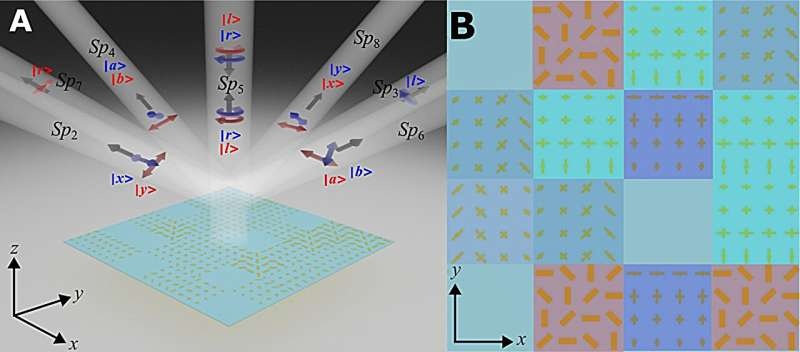Learn how revolutionary spin-controlled metasurfaces are ushering in a new optical age by unparalleled control of polarization states and incredible applications in diverse disciplines.

The Power of Artificial Atoms
Optical metasurfaces are exceptional two-dimensional arrays of artificial atoms, which are miniature building blocks that can to control light unlike those in natural materials.
By tuning the shape, size, rotation and position of these artificial atoms with high precision, photons can be controlled in ways that no natural material can allow for such as in photonics. Among these is the capability of exact control over polarization, an aspect central to the pioneering work reported in this article.
A Broader Spectrum of Polarization
So far, metasurfaces have typically been able to only produce a small set of different polarization states on a few channels. But the researchers in this new effort have designed an arrangement that produces every type of polarization left-handed and right-handed circularly polarized light, as well as linearly polarized light with different orientations across several channels at once.
This is accomplished through clever metasurface engineering, comprising six interweaved regions with random polarization-coding at different reflection directions, capable of delivering and capturing distinct polarization states. The incident circularly polarized light was converted to the target linear polarization that then reflected at different angles by employing a programmable metasurface constructed from nanoscale half-wave and quarter-wave plates with predetermined rotation angles, implementing an easily controlled dynamic system of arbitrary polarization control.
Conclusion
LLNL researchers said the research presented is a major step forward in the field of polarization optics and has some potential for making future optical devices that are smaller, more efficient and have higher power. Their remarkable properties provide novel opportunities for applications from imaging and sensing to communication and advanced optical technologies in the nanoscale range. Given the scale of improvement that can be achieved, this technology therefore has the potential to usher a new-age in multiphysics-driven optical systems with ramifications across sectors for ubiquitous control-oriented intelligent optical devices in complex sciences.
